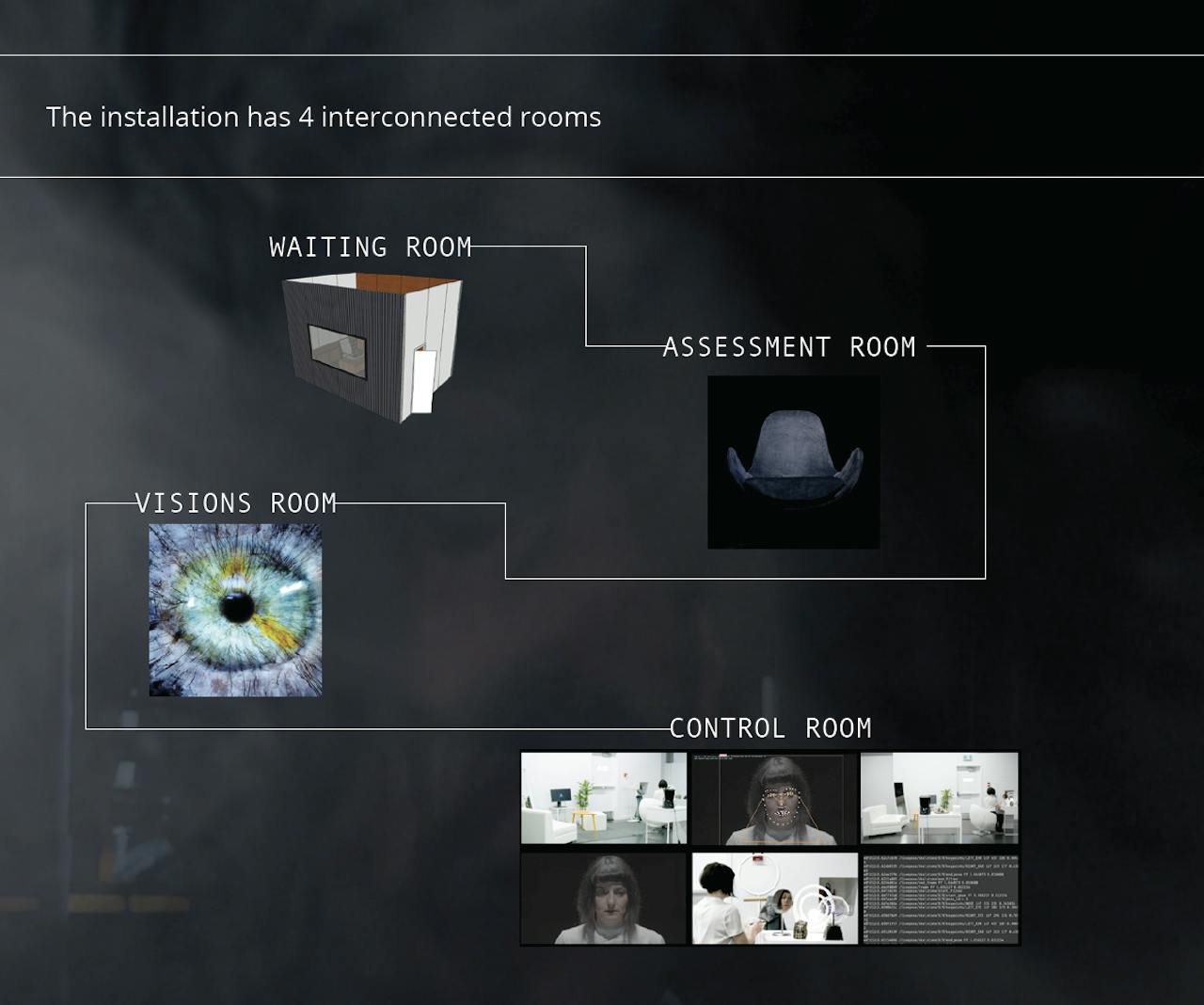The Stations

Stations Overview
The installation has 4 interconnected rooms.
- The Waiting Room
- The Assessment Room
- The Visions Room
- The Control Room
Immersive stations design and technical information
General consideration
The installation is scalable depending on the size of space available and the audience capacity required.
Seats for the public are not required as the audience is standing and walking, however seats can be added in the form of chairs, benches, or cushions for added comfort and for public with reduced mobility.
Language
The original version of the installation is in English and French. However Outside/In can be created in any language in consultation with the artistic team.
Options for experiencing the installation
There are two options for experiencing the Outside/In installation.
Both versions involve audience interaction and participation to enhance the experience.
- Option 1: Installation with live performance. In this options, the audience actively follows the journey of three protagonists as they move within the installation. This option involves a one-hour immersive performance with 3 performers, with a maximum of three performances offered per day.
- Option 2: Installation with no live performance. In this version, the protagonists are represented as avatars, holograms, voices, and video images. This option is well-suited for settings like museums or galleries where the installation is open to the public for extended periods.
Waiting Room
The audience is invited into an observation room, looking into a seemingly private space through a one-way mirror. At the begining of the installation, the audience can see without being seen. This setup brings attention to our natural curiosity and the idea of surveillance, encouraging viewers to recognize their own urge to observe. The public is introduced to three protagonists, Seeker 1, Seeker 2 and Seeker 3, who appear and disappear in turns, coming back from a mysterious experience. This cycle stirs the viewer’s curiosity, inviting them to follow one of the Seekers' journeys to learn more.
Assessment Room
In this station, each Seeker arriving from Station #1 sits in a chair, facing the hologram of their Assessor. The public watches as the Assessor conducts live assessments, questioning each Seeker to gather personal data to understand and control their actions and dreams. The questions focus on whether they have ever visited "a forest"—an unregulated space the Assessor is eager to understand and locate.
The public is then invited to have their own conversation with the Assessor who uses "the forest" as a central symbol and prompt to ask participants about their dreams, encouraging a playful and interactive exchange.
Visions Room
The recorded conversation from the assessments is transformed by AI into immersive video projections, displaying personalized, dreamlike landscapes. These visuals create an experience where the stories of the protagonists and the public come to life as they make their way through forest landscapes, flying above the trees, and awaking memories of place where they will all meet again in the future. An original electronic soundtrack accompanies these immersive video projections.
Control Room
This central surveillance hub offers a panoramic view of video and audio feeds from other rooms across six channels, allowing the audience to monitor all stations within the installation. These stations form different pathways, enriching the installation's multifaceted and varied experience. The Control Room itself is also under surveillance, prompting questions about who is watching whom and why.











